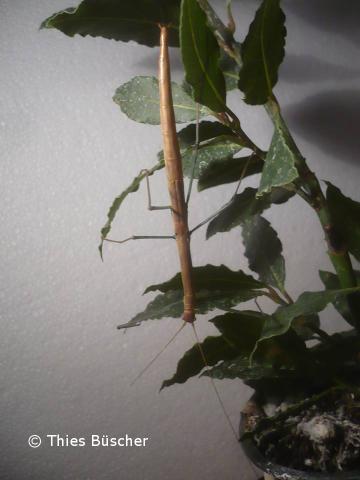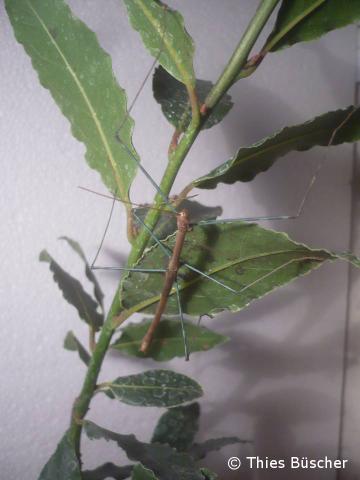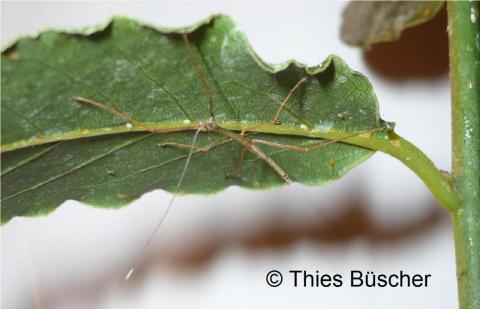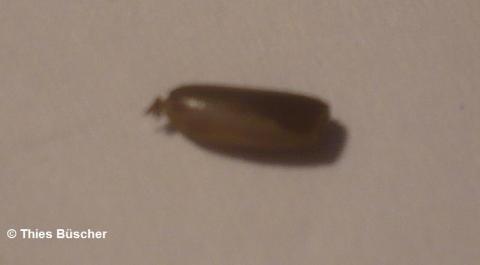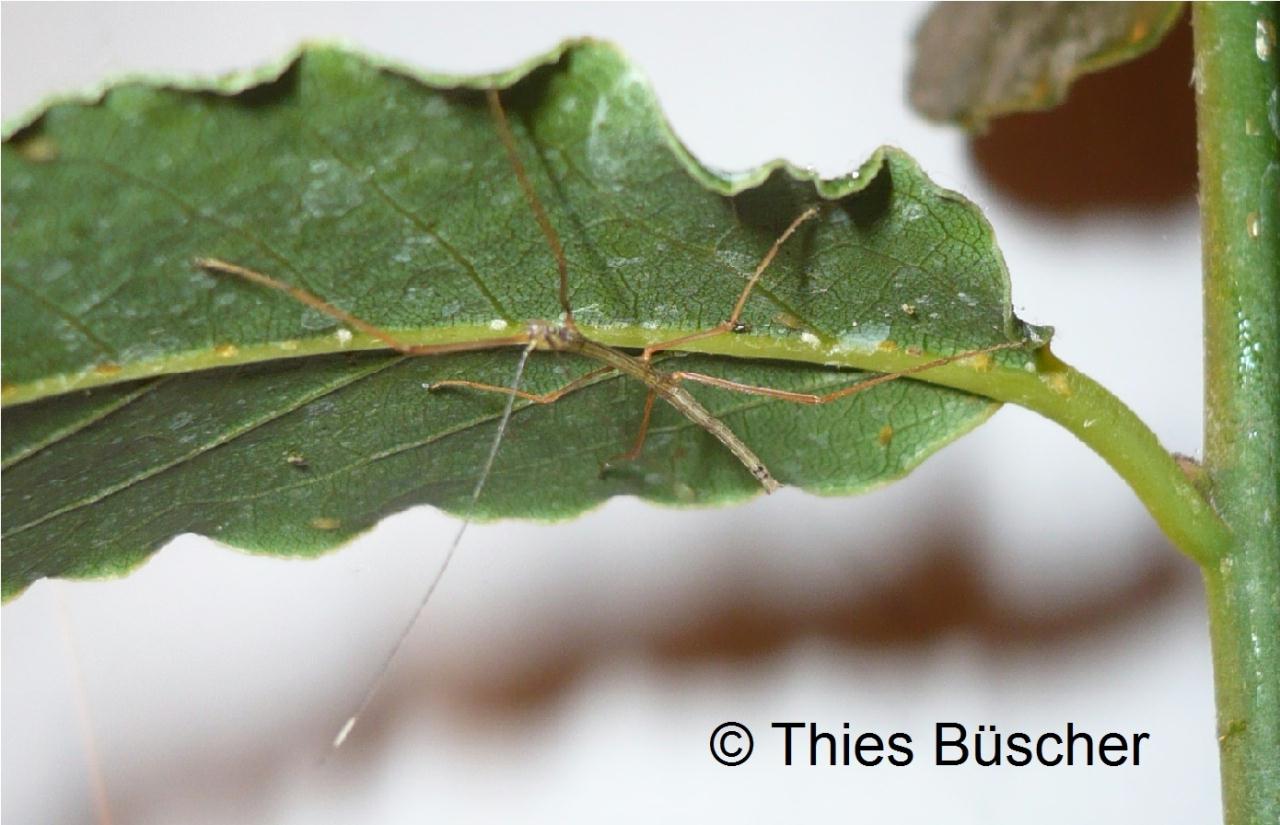
Genus
Species
Stock
CLP
678
PSG
374
Culture status
In culture
Foodplants
Bay laurel (Laurus nobilis)
Salix sp.
Bramble (Rubus spp.)
Privet (Ligustrum spp.)
Breeding notes
(by Thies Büscher)
General Notes
- this culture was formerly known as Necrosciinae sp. "Cat Tien"
- Joachim Bresseel does taxonomical work on this species and genus
- there are various similar Necrosciinae species which are part of this new genus and are going to be described by Joachim Bresseel
- their appearance is very similar to Necrosciinae sp. “Con Dao”, thus they might be related
_________________
Origin
- Cat Tien National Park, Vietnam
_________________
Females
- approx. 80mm (body length)
- short winged (hind wings reach to 1/3 of the abdomen, approx. 20mm)
- colorful; head and wings in different brown shades
- body dorsal brown with a yellow stripe and ventral green
- membranous part of the hind wings is dark brown
- long antennae
- legs are turquoise and have dark stripes
_________________
Males
- approx. 70mm (body length)
- wings reach 1/3 of the Abdomen
- colorful; head and wings in different brown shades
- body dorsal brown with a yellow stripe and ventral green
- membranous part of the hind wings is dark brown
- long antennae
- legs are turquoise and have dark stripes
_________________
Nymphs
- often accept crack willow (Salix fragilis) better than Laurus nobilis
_________________
Eggs
- hatch after 3-4 months
- short posterior spine
- about 5 x 1,5 mm (including spine)
- elongated
- grey, with elongated micropylar plate
- often placed in clusters
_________________
Food Plants
- Bay laurel (Laurus nobilis)
is accepted well - many willow species (Salix sp.) are accepted well; especially crack willow (Salix fragilis)
- bramble (Rubus spp.) is well accepted (Info Reto Bonfiglioli, Andreas Rolke)
- I tried some different plants, but I did not find any further accepted foodplants
- probably Salal (Gaultheria shallon) coated with Laurel also might work
- privet (Ligustrum) is well accepted (Info von Philippe van der Schoor)
_________________
Behaviour
- both, nymphs and adults, are rather active during the day
- mostly active during the night
- if small nymphs are touched, they use thanatosis
- older nymphs and adults (especially adult males) try to drop to the ground or crawl away, if being touched.
- an odorous defense spray is used
- mating and deposition of eggs occurs during the night
_________________
Developement
- incubation time (HH-incubation on slightly damp sand at 20 - 23 °C) is approx. 3 months
- high hatching ratio
- I spread some dry moss over the eggs to support the process of hatching
- females start laying eggs after about 2 – 3 weeks
- eggs are sticked into different substrates
- I offer floral foam for the deposition of eggs and it is accepted very well
- lay about 10-15 Eggs per week
- male and female live several months (5-7)
_________________
Breeding Notes
- keep them in good ventilation with moderate humidity (60%+ rH).
- I have never sprayed nymphs or adults with water, but I have watered the soil once a week
- a wet towel paper could also be enough to keep up the humidity
- keep the nymphs in a cage that offers no chance to escape; for example a prepared faunabox works
- when the nymphs grow bigger, move them into cages of appropriate size
- I generally keep species separately to avoid cross-breeding and overcrowding
- choose cages which are high enough to avoid mistakes at moult and ensure that individuals have no chance to moult in places that would lead to miss-moult
